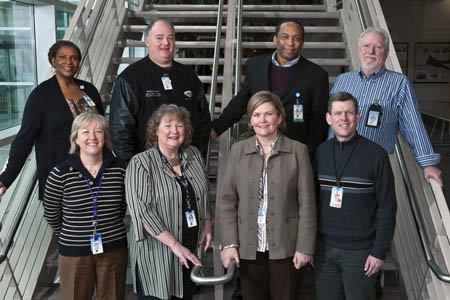
Diversity recruiting poses a particular challenge for employers in STEM (science, technology, engineering, and mathematics) fields. STEM majors are a small group in high demand, and employers are faced with the question of how to differentiate themselves and to attract an even narrower subset of these students: top diversity talent.
The lack of diverse employees in STEM fields in the United States is significant: Although African Americans and Hispanic/Latinos make up more than 27.9% of the total population, they only constitute about 7% of the STEM workforce, according to data from Monster. The remaining 73% is made up of non-Hispanic whites. Since diversity recruiting is recognized as an important business strategy to maximize creativity and productivity, the lack of qualified diverse candidates is a huge problem facing STEM employers.
To respond to the scarcity of diverse STEM majors, many companies are targeting younger age groups with branding efforts, including educational programs designed to generate interest in science among children. Boeing is one example of an employer taking action to begin “recruiting” diverse STEM candidates early on — even as early as preschool. Boeing is a sponsor of Sid the Science Kid, an animated television show on PBS that aims to make science exciting for children. Not only is Sid curious and enthusiastic about learning, but he also comes from a mixed background that is identifiable to children of all ethnicities. Boeing’s sponsorship is a strategic move, getting children excited about science and familiarizing them with Boeing at an early age.
Although these early branding efforts are certainly a step in the right direction, they aren’t always enough.
Even children who express interest in science and technology don’t necessarily gravitate toward STEM careers later on: Nearly 94% of students who show potential for STEM careers in ninth grade choose non-STEM occupations by the time they graduate college, according to the U.S. Census. National and state governments in the U.S. have even implemented programs to incentivize students to choose STEM majors, including tuition cuts for more technical fields. But the pool of qualified candidates remains small.
In spite of the growing emphasis on promoting technical careers, the fundamental issue of the limited supply of qualified candidates remains. Nearly every employer, from government agencies to engineering companies, is faced with the question of how to secure top diversity talent from such a small pool of candidates.
How should employers position themselves in order to attract these students?
Interestingly, Universum’s research indicates little significant difference between what we call in our studies the Ideal Employers of diverse and non-diverse STEM students in the U.S. That means the top employers are on an even playing field and are largely doing the right things to attract all candidates, regardless of ethnicity. However, it never hurts for some companies to focus more on diversity messaging to attract specific target students.
Universum’s research does indicate some differences in what diverse and non-diverse students value when it comes to a company’s people and culture. Both diverse undergraduates and non-diverse undergraduates identified respect for its people as the most attractive attribute an employer could offer, with 50% of diverse and 51% of non-diverse students selecting it. However, there is a discrepancy between students’ prioritization of an employer’s acceptance of minorities: For non-diverse students, it is the least important attribute (6%) offered by employers, while diverse students find it considerably more attractive (21%).
Also, although diverse students want to work in an inclusive and diverse environment, Universum’s research indicates that these students don’t necessarily want their diversity defined by attributes that they cannot control. When ethnically diverse students were asked what diverse attributes they would bring to an employer, “personality” and “education” were the top-rated terms, followed by “ethnicity.”
The takeaway is that while it’s important to minority students that their work environment is friendly and accepting, employers need to be careful about defining their candidates by their diversity. There is a fine line, for example, between inviting a Hispanic woman to a diversity event to showcase an inclusive office environment and pigeon-holing her as a “Hispanic woman.”
Diversity-focused recruiting is valued by many ethnically diverse students. But, many more also indicate that employers can increase their attractiveness by offering internships, scholarships, mentorship programs, and networking events — all of which are applicable to diverse and non-diverse students. Offering a variety of ways for the right students to get their foot in the door can help STEM employers achieve a strong and multi-faceted workforce. Furthermore, students value transparency. If an employer is not yet diverse, students would much rather learn what the employer is doing to change that than be misled.
For employers interested in attracting diverse students from fields like STEM that don’t offer a large pool of qualified candidates, the focus on developing the right communication and messaging is extremely important. Overall, a respectful, diverse workplace is an environment that employers should strive to achieve, but an inclusive, holistic approach will be most attractive to students — diverse or not.